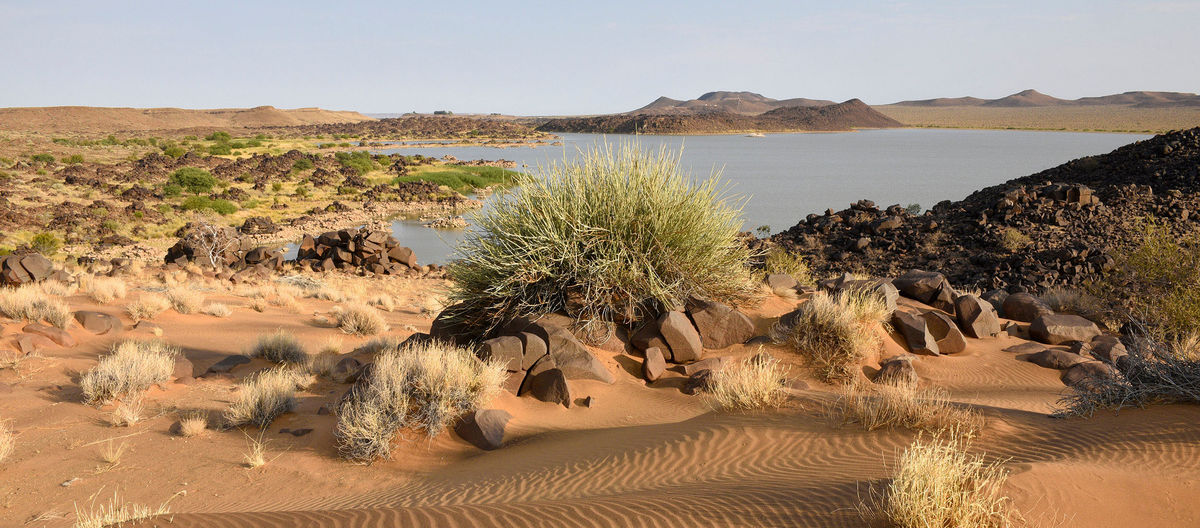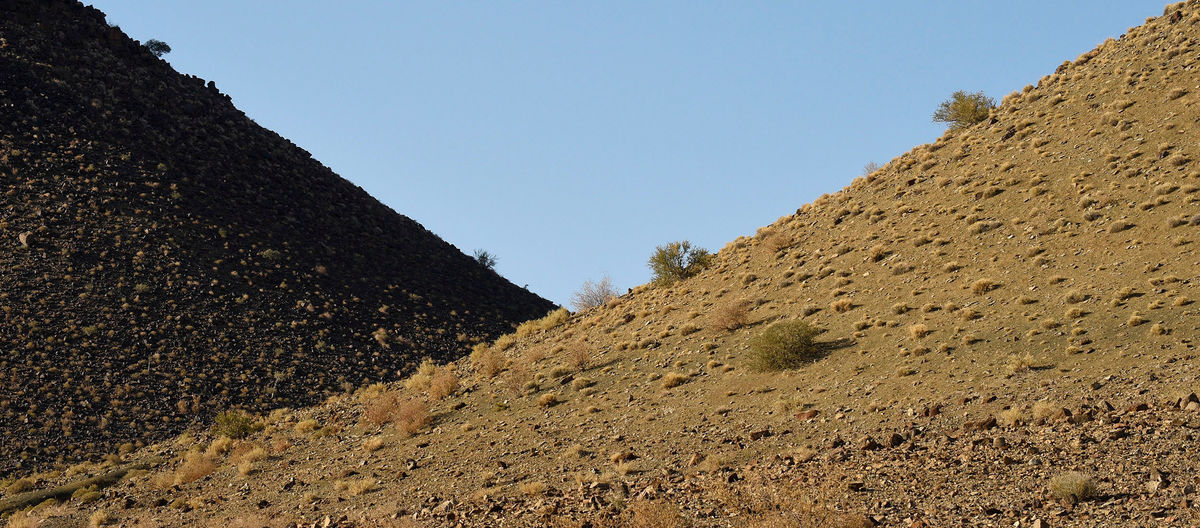Kavango Zambezi Transfontier Conservation Area
In a way it’s refreshing when a wonderful little sanctuary remains beyond our hunger for leisure destinations. While Naute’s tourism potential remains unrealised, the game park does fulfil its conservation function.


In a way it’s refreshing when a wonderful little sanctuary remains beyond our hunger for leisure destinations. While Naute’s tourism potential remains unrealised, the game park does fulfil its conservation function. It protects attractive Nama Karoo landscapes and a variety of wildlife and desert flora. It’s a characteristic sample of Namibia’s arid southern reaches, diversified by the large waterbody. Those who have access to the park through their work are privileged.
Naute is one of Namibia’s largest man-made lakes. Its shoreline, abutting long stretches of rocky plains and intricate sections of small bays, is very attractive The dam location on the Löwen River was already identified by German engineers over a century ago, yet construction of the reservoir only took place 70 years later. The dam was created as a reliable source of water for the nearby town of Keetmanshoop, and to enable an agricultural scheme adjacent to the reservoir.
The lake creates an ideal focal point for a game park, although this was only proclaimed just prior to independence. Thirty years on, its tourism potential remains untapped, overlooked in the vastness of the ‘forgotten South’. Discussions around a tourism concession with the neighbouring !Gawachab Conservancy may gain momentum in the future. For now, Naute is still worth a brief stop-over visit while travelling between Keetmanshoop and the Fish River Canyon.
WHEN TO BE THERE:
- Visitor access is restricted to the recreation area; this is open all year
- Day temperatures can be very hot during summer
- Fishing competitions are held intermittently & the recreation area is a weekend retreat for locals
- The game park is currently not open to visitors
WHAT TO DO:
- Stop at the lake for a refreshing break on your travels
- Enjoy a short walk & some good birding
- Do a spot fishing along the shore
- Visit the nearby agricultural scheme
WHAT TO REMEMBER:
- Access is restricted to the small recreation area
- A permit is required for fishing, obtainable at the Karas Regional Council in Keetmanshoop
- There are no amenities at the dam
- Do not litter, take all rubbish with you
History
Livingstone first described ‘the smoke that thunders’ to the western world after discovering the now world-famous falls in 1855. Since then, Livingstone, the Zambezi and the Okavango have provided unabated inspiration for countless explorers and travellers. As have innumerable other magical places within the river basins. Makgadikgadi, Chobe, Matusadona, Hwange, Kafue, Kwando, Khaudum… all have become emblems of African wilderness and wildlife. To know that they, and the lands between them, are being linked by a common conservation vision spawns hope for a new balance between development and conservation.
After discussing various name options, country representatives agreed on using a combination of the two major river basins of the area, the Okavango and Zambezi, as the name for the transfrontier park. The Okavango is also referred to as the Kavango; this version gives the overall name a better ring and the neat acronym of KAZA, using the first two letters of each river name
Activities
Conservations
Modern conservation is about protecting indigenous biodiversity by achieving a land-use balance, by removing physical barriers and political borders to ensure healthy ecosystems, rather than guarding isolated patches of protection. KAZA is a manifestation of this ideal. It’s a true megapark, promoting conservation without borders across countries, parks and communal lands. In Namibia, the KAZA landscape embraces about 71,500 square kilometres with 22 communal conservancies and five national parks.
A central objective of KAZA is to enable natural wildlife movements. The area is home to almost half of Africa’s elephants. For these great grey herds, movement is vital. Namibia’s Zambezi Region, with its unfenced parks, lies at the very core of elephant dispersal in KAZA. The ability to roam is also crucial for the lion and African wild dog populations of Zambezi, as well as for buffalo, Burchell’s zebra and other herbivores.
Map
-18.00000 23.00000
Klein Windhoek

